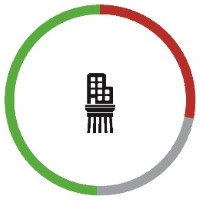
What do we think of our offices today? And what do they look like?
What do we think of our offices today? And what do they look like? We called up Tim Oldman, founder and CEO of Leesman Index, which has conducted over 100,000 surveys on how we perceive our workplaces.
What do the offices of our time look like?
“They are extensively open-plan offices. I’m not sure if there’s a particular reason for this, other than perhaps to save costs. I think there is a belief that a densely populated office is more cost-effective. The challenge here is the aspects of the sound landscape. But the office of today has not proven to be a highly productive workspace.”
So why do you think open-plan is still the most common office environment?
“It offers considerable advantages. But we have yet to quantify and offset accurately the disadvantages. We don’t fully understand how to compensate for the negatives. That is the biggest challenge to anyone involved in the design and management of workplaces.”
| Is your office a place you are proud to bring visitors to? | Does the design of your office create an enjoyable environment to work in? | Does the design of your office enable you to work productively? | |||
 |
 |
 |
|||
|
28% disagree 23% neutral 49% agree |
27% disagree 16% neutral 57% agree |
30% disagree 16% neutral 54% agree |
Do people like their offices?
“Just 54 per cent say that the design enables them to work productively. The purpose of an office fundamentally is to accommodate a team to undertake the role they are employed to do. If the primary role of a workplace is only being met for 54 per cent of employees, I think we have some major questions we need to ask.”
According to your recent report, only 28 per cent of people working in open-plan offices are satisfied with the acoustic conditions. Why is this area so overlooked?
“I think the reason is that the design community has a very poor awareness and knowledge base on acoustics and sound in open areas. They need to increase their knowledge on how to compensate for the noise levels in open-plan spaces.”
In the same report, 95 per cent said privacy was important to them. Are open-plan spaces really a good idea at all?
“The challenge is that there are not enough variations. People who have finished collaborating need concentrative space where they can commit their ideas and thinking. The open plan is great for some aspects of work, but very poor for other aspects. When the office design does not provide for those other aspects, the solitary and concentrative for example, then the overall landscape will fail.”
What should be management’s chief consideration?
“The prime responsibility of the management is to understand the differences and what the employees actually are doing. There’s an assumption that one size fits all. We have to move managements away from that concept.”
What trends can you see now?
“The biggest trend we see is an increased interest in activity-based work. The risk in that trend is that too many see it as a design strategy rather than a management strategy. The design is one of the factors, but you’ll need infrastructure and behaviour changes to fully adopt an activity-based working approach. We have actually started to talk about activity-based thinking instead of working.”
Text: Lars Wirtén
Photographer: Leesman Index

